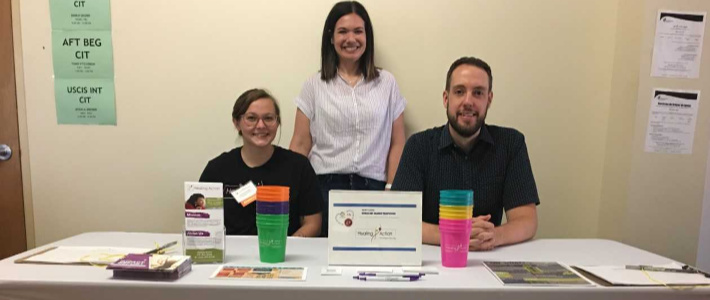
Covering the Delta Between Grant Funding and the Needs of Our Non-profit’s Service Community
Three years ago I was new to my role as Development Director of a small non-profit. Much like a start-up, the organization was started to solve a specific issue, by someone who had experienced the issue first hand.
Our case is to combat commercial sexual exploitation and help adult survivors in the healing process. Since the St. Louis region is ranked 16th in the country for reports of sexual exploitation and trafficking we believe we’re doing important work where it needs to be done. However, the cause is a niche one. It’s thankfully not something that you could say everyone knows someone who has experienced it, so building an individual donor base is definitely a long term strategy, with the first step being raising awareness.
To truly get off the ground, the goal was to learn the fundraising landscape, identify leads, verify those leads as good match potential funders, and take the gamble that the applications (and the cause) would rise to the front of the herd to receive some funding.
If you’ve gone through this process you already know that no two grants are the same. Much like snowflakes, they each have intricate differences, either in the content that is requested, and/or how the content is scored by the reviewing entity. So after learning the ropes, the funding starts to come in. Not everything you have applied for, but enough that it all seems to make sense and you begin to believe that your tired eyes, numb fingers, and sleepless nights were all worth it.
With the organization securing a few million dollars in grant funding since 2015, the new task at hand after being awarded is keeping the funding that you have received. Monthly billing for reimbursement grants, quarterly reports narrating progress towards outcomes, annual site visits and audits, and final reports are just some of the dances you have to learn to keep up with the requirements.
After this is all said and done, the gaps in your funding become ever more apparent. Restrictions on how funding can be spent are as specific to the grantmaker as the application you initially prepared for them. Generally speaking, administration and fundraising (overhead) expenses are seen as problem children compared to the golden child of program expenses. A business needs infrastructure to run successfully, and non-profits are no different.
Aside from that, there are program-specific limitations that we have to keep track of. In the case of Healing Action, which provides adult survivors of sex trafficking and exploitation with a safe place to begin the healing process as well as counseling services to support them in reclaiming their lives, one of our greatest needs is housing for members. Grant supplied housing funding often comes with caveats, with individuals needing to be homeless “enough” to be worthy of assistance and most can’t be spent on emergency hotel rooms, despite that being a need for a population that may be fleeing for safety. Government dollars can’t be utilized to assist individuals that may not have a clear-cut history that paints them as a victim of crime in the eyes of the law, so how do we tell one person they can access services, and the other they can’t, if we know they have been both victimized?
That is where financial support from caring individuals comes in. Unrestricted donations from individuals that go into the core mission of a non-profit so that we may have our infrastructure, and serve who needs help by giving them access to the things they need.
As a development professional, I strive to reach financial security for our non-profit by having our overhead covered so that all individual donations could go to the people we service. That is one of the reasons I keep my nose to the grindstone and my fingers on the keyboard to keep that grant money coming. But as I have already noted, overhead is one of the hardest things to get funded, so my goal is just a wish that I aspire to manifest, when the stars align and the moon is in retrograde, in order to meet the requirements for funders and donors alike so that we may ultimately meet the needs for the clients we serve.
Tomorrow, Thursday October 24, 2019, Healing Action will host its third Annual Ladies’ Night Out. This fundraiser is one of the efforts that Healing Action is making to continue to provide services for their members that aren’t covered by the grant funding they have received.
Healing Action is a survivor-led organization. The members they serve receive counseling, life assistance, education and job assistance, and a safe haven to escape – not just physically, but mentally and emotionally – from a life of entrapment and abuse. This fundraising event is a fun night for you, and a life-saving night for them.
Tickets are available through EventBrite.
